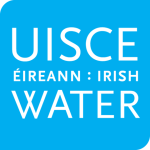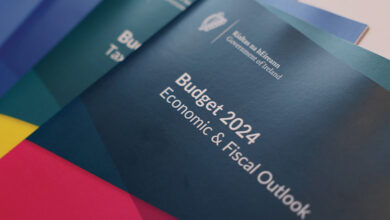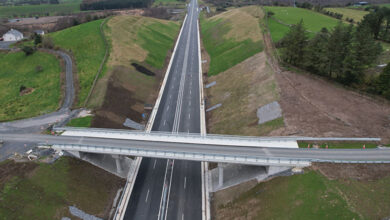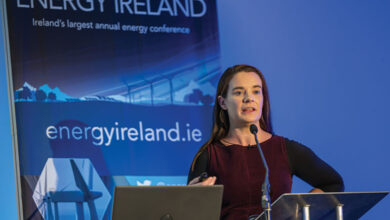Irish Water: A national water utility for Ireland
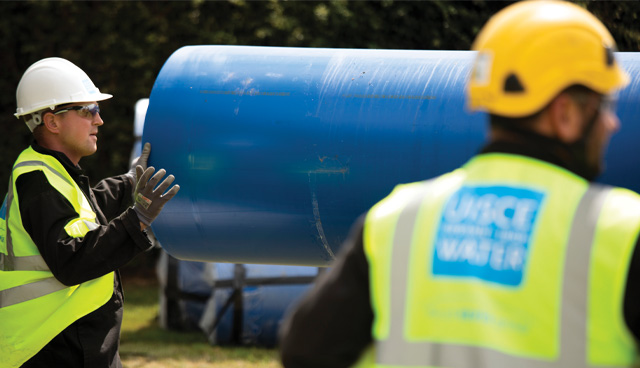
Six years ago, Ireland’s first public water utility was established as a regulated commercial semi-state company to provide safe, clean, and environmentally compliant water and wastewater services to homes and businesses connected to the public network.
Assembling for the first time a core capability in water asset operations, asset management, capital delivery, environmental and economic regulation and customer operations, this national organisation builds on the extensive knowledge and experience of 31 local authorities who continue to manage day to day operations through a service level agreement as the delivery of water services transitions to a single public utility.
Irish Water treats 1.7 billion litres of drinking water and 1.2 billion litres of wastewater each day using 7,000 water and wastewater assets including treatment plants, pumping stations, reservoirs, storm water overflows, and 88,000km of water mains and foul/combined sewer pipe networks providing services to 1.6 million homes and 172,000 businesses in Ireland.
Despite excellent work by local authorities, a fragmented service delivery and funding model over recent decades and the absence of a single national risk-based approach to asset and investment priorities means that Ireland’s water infrastructure still has many challenges. For much of the past six years, Irish Water has focussed on establishing consistent service standards for customers regardless of location, with a priority on public health and protecting the environment. Important investment has been made to eliminate long term boil water notices, end the discharge of untreated wastewater into open water bodies and deliver new capacity for drinking water and wastewater treatment. Ireland is still not compliant with European water directives and significant challenges remain.
Policy and funding to meet the legacy challenge
Recognising the importance of high-quality water infrastructure to the economy and to the environment, current government policy for investment in public water services is clear. The Water Services Policy Statement 2018-2025 outlines priorities under the themes of Quality, Conservation and Future Proofing. Irish Water is currently managing a portfolio of more than 400 capital projects and 40 national programmes. €3.9 billion has been invested to date with a further projected spend of nearly €5 billion up to 2024. Irish Water has delivered significant improvements since 2014:
In 2014 there were 121 public water schemes considered ‘at risk’ of water quality failures by the EPA. Since then Irish Water has completed remedial works in 102 of these schemes, leaving 19 schemes from this original list. Irish Water is progressing works for these remaining schemes and the rest of the 52 schemes which are on the EPA’s Remedial Action List at the end of 2019.
98 water treatment plants and 45 wastewater treatment plants have been built or upgraded since 2014.
15 areas that had no wastewater treatment are now connected to new wastewater treatment plants and works have been completed on a further 36 areas to improve their wastewater treatment.
1,783km of water mains and 204km of sewers have been laid or repaired.
Estimated gross leakage savings of more than 300 million litres per day have been achieved since 2014 (half on the public network, half on private property).
Major national strategic infrastructure is being progressed including the Water Supply Project for the Eastern and Midlands Region, Vartry Water Supply Scheme and Stillorgan Reservoir, Ringsend wastewater treatment upgrade works, Cork Lower Harbour main drainage scheme, the Greater Dublin Drainage project and the Regional Biosolids Storage Facility and Arklow wastewater treatment plant.
Balancing the water we have with the water we need
Resilience in Ireland’s public drinking water supply has become increasingly important. Two days’ rainfall provides enough water for Ireland’s drinking water needs for a full year. The challenge is that we don’t have sufficient available raw water supplies where they are needed, our leakage rates are high, our treatment plants are not in the right places and we don’t have the ability to move water around the network easily. Greater Dublin has a well-documented over-dependence on the River Liffey which supplies 85 per cent of drinking water for the capital city and surrounding counties. Even with a continuing focus on leakage reduction below the current level of 37 per cent in the Greater Dublin Area, this area needs a new resilient drinking water supply. This problem is being experienced in other areas of the country, albeit at a smaller scale.
To address this problem, Irish Water has developed a new approach to how we balance available drinking water supply with current and growing demand over the short, medium and long term while minimising the impact on the environment. The National Water Resources Plan, which will be published in 2020, is based on three pillars:
Use Less — Public information campaigns on water conservation, the Water Stewardship Programme for businesses and supporting the Green Schools programme. Implementation of CRU decision on the Household Water Conservation Charge in line with government policy.
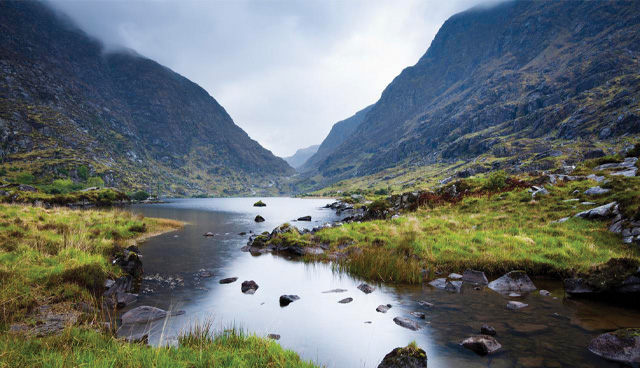
Lose Less — reducing leakage to the greatest extent possible. Irish Water has built a new Leakage Management System to apply a single standardised system to calculate, monitor and report on leakage for the first time and target investment to achieve maximum water savings. Irish Water’s National Leakage Reduction Programme will invest €500m by 2021.
Supply Smarter — resilient water supplies depend on having the right infrastructure in the right place. The new methodology outlined in the National Water Resources Plan examines multiple factors to identify the most sustainable, reliable infrastructure solutions to deliver future water supplies where they are needed across the country.
Focus on continued infrastructure delivery to support sustainable growth
Future investment by Irish Water will continue to prioritise repair, upgrading and extending assets that deliver the greatest benefit to communities and businesses in the most efficient way while safeguarding the environment. Ireland’s economy continues to grow with increasing demand for industrial premises, offices and housing. Irish Water must support this economic growth, but it will be challenging given the significant investment in water and wastewater infrastructure that is still needed.
In 2019, Irish Water responded to 2,221 pre-connection enquiries for new water services connections covering 131,728 housing units. 93 per cent of the connection application units were in housing or mixed unit developments. Offers were issued for 4,683 new connections, covering 28,533 housing units. We are continuing to invest in quality drinking water supplies and wastewater treatment options. New Drainage Area Plans (DAPs) will improve our wastewater network with a focus on environmental compliance, customer service and growth.
A new national connection charging policy agreed by the Commission for the Regulation of Utilities (CRU), Irish Water’s economic regulator, came into operation in 2019 and now applies a single set of charges and a standardised scope of work for water and wastewater services connections. The CRU also published its decision on Irish Water’s Non-Domestic Tariff Framework in 2019 to produce a harmonised range of tariffs for non-domestic customers to replace 500 current tariffs. This will come into effect from 2020 and Irish Water’s business customers will now have greater transparency, simplicity and equity in tariffs applied to provide their service.
Completing the strategic national water infrastructure projects our economy and communities need will be critical to the entire country. Successful delivery of current and future capital programmes depends on the planning and legal process and supply chain capability and availability. These resources will be in high demand in the coming years and project delivery costs will be a key challenge for Irish Water and our stakeholders. Our economic regulator has set challenging efficiency targets for Irish Water up to 2024. This increases the importance of continuing the transformation of the industry to a single public utility with an in-sourced service delivery model that retains the knowledge, experience and capability currently in local authorities.
W: www.water.ie
Twitter: @irishwater
Facebook: IrishWater
LinkedIn: Irish Water
